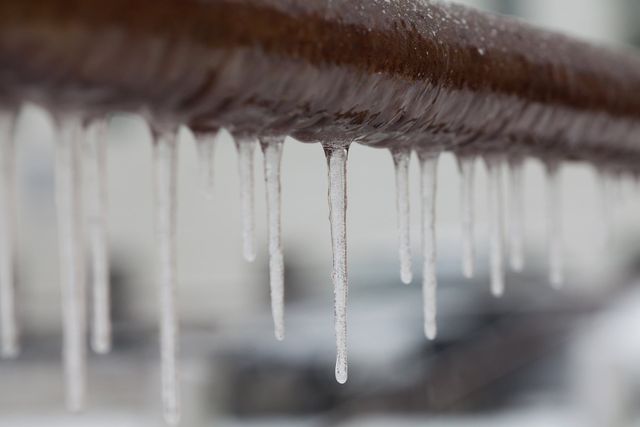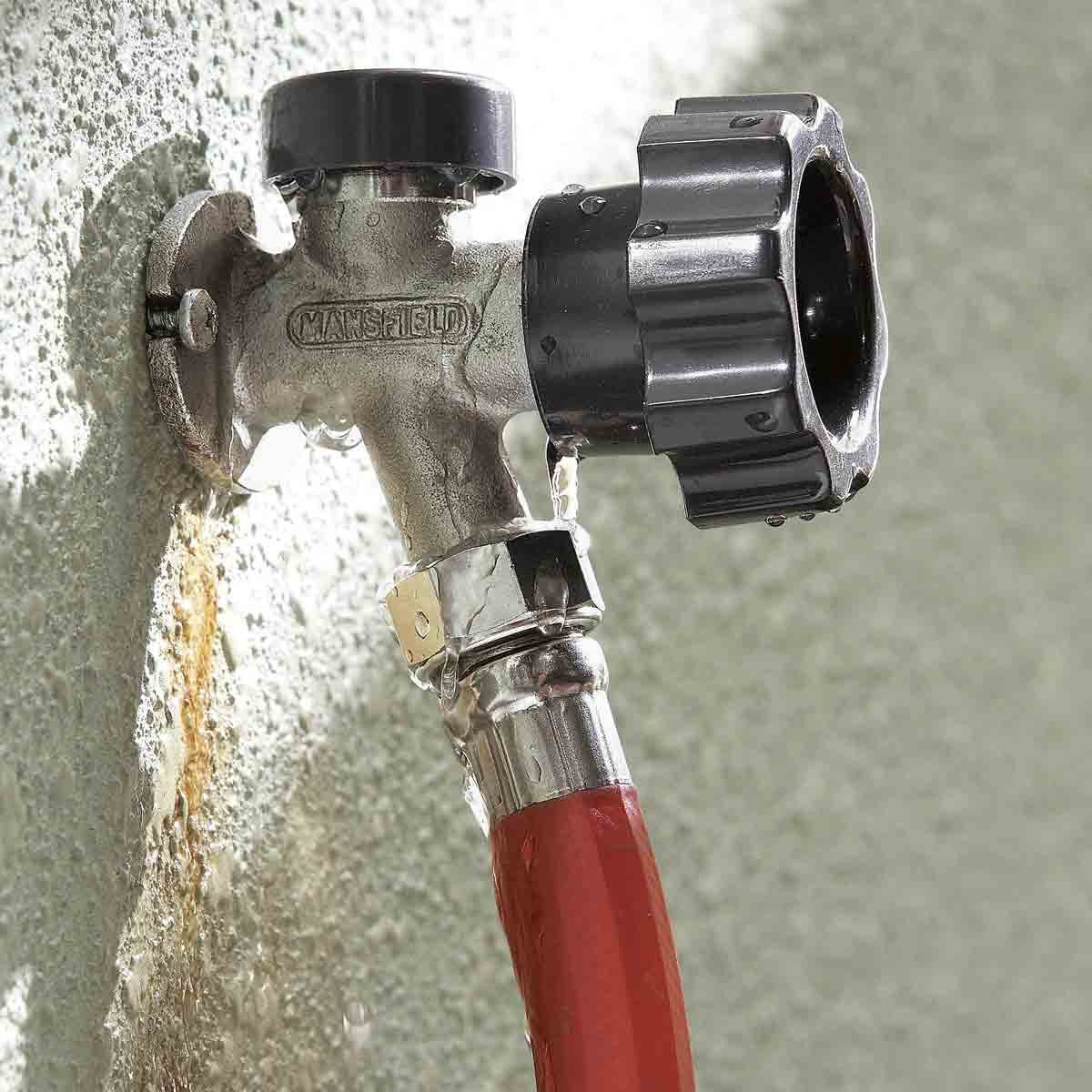How to Winterize Your Plumbing: 5 Hacks to Prevent Bursting Pipes in Frigid Temperatures
How to Winterize Your Plumbing: 5 Hacks to Prevent Bursting Pipes in Frigid Temperatures
Blog Article
What're your thoughts with regards to Winterizing Your Pipes?

All property owners who stay in pleasant climates should do their ideal to winterize their pipelines. It is something you should do throughout autumn before deep winter absolutely begins. Failing to do so can mean catastrophe like icy, fractured, or ruptured pipelines. If the climate outside is shocking, below are some useful winterizing hacks to keep your plumbing system shielded even.
Switch on the Faucets
When the temperature decreases and also it seems as if the icy temperature will last, it will certainly help to switch on your water both inside and also outdoors. This will certainly keep the water streaming via your plumbing systems. Additionally, the motion will certainly slow down the cold procedure. Notably, there's no requirement to turn it on full force. You'll end up losing gallons of water this way. Instead, go for regarding 5 declines per minute.
Open Cabinet Doors Hiding Plumbing
When it's chilly outside, it would certainly be valuable to open up cabinet doors that are camouflaging your pipes. For instance, they could be somewhere in your kitchen area or washroom. This will enable the warm air from your heating unit to distribute there. As a result, you avoid these subjected pipes from freezing. Doing this tiny method can maintain your pipelines warm as well as limit the potentially hazardous results of freezing temperature levels.
Take Some Time to Cover Exposed Piping
One simple as well as cool hack to warm up frigid pipelines is to wrap them with cozy towels. You can cover them first with towels. After safeguarding them in position, you can put boiling water on the towels. Do it slowly to let the towels absorb the liquid. You can also use pre-soaked towels in hot water, simply don't forget to use protective gloves to secure your hands from the heat.
Attempt a Hair Dryer or Warm Gun
When your pipes are almost freezing, your trusty hair clothes dryer or heat gun is a blessing. Bowling hot air straight into them might help if the warm towels do not help dislodge any type of working out ice in your pipelines. Nonetheless, do not utilize other items that create direct flames like a strike torch. This can lead to a larger calamity that you can not control. You might end up harmful your pipes while trying to thaw the ice. And in the future, you might even wind up burning your house. Be careful!
Shut down Water When Pipes are Frozen
If you discover that your pipes are totally icy or almost nearing that stage, turn off the primary water shutoff promptly. You will usually discover this in your cellar or laundry room near the heating unit or the front wall closest to the street. Transform it off immediately to avoid more damages.
Do not fail to remember to shut exterior water resources, also, such as your connection for the yard house. Doing this will certainly protect against added water from filling up your plumbing system. With even more water, more ice will load up, which will ultimately lead to rupture pipes. It is best to call a professional plumber for an evaluation if you are unclear about the state of your pipelines this winter. Taking this proactive technique can conserve you thousands of dollars in repairs.
All homeowners that live in pleasant environments must do their best to winterize their pipelines. Failure to do so can mean disaster like frozen, fractured, or burst pipelines. If the warm towels do not aid remove any kind of clearing up ice in your pipes, bowling hot air straight right into them may aid. Transform off the main water shutoff instantly if you observe that your pipes are entirely frozen or virtually nearing that stage. With even more water, even more ice will load up, which will ultimately lead to burst pipelines.
PREVENT YOUR PIPES FROM FREEZING THIS WINTER
A Leading Cause of Property Damage
When the weather is taking a deep nose dive into the cold dreary days, the risk of your pipes freezing and potentially bursting skyrockets. Unfortunately, during these cold dreary months, burst pipes are the most common denominator for property damage. The pipes that are most at the risk are those that are in areas where it is most cold in your home. For instance, pipes located in interior places such as basements, attics, and your garage. Unfortunately, that doesn’t mean that the pipes running through your cabinets or exterior walls can’t freeze. Good news, however, is that you can do things to help prevent pipes from freezing.
How to Prevent Pipes From Freezing
Once the temperature starts to drop during the winter, you should be taking the proper measures needed to ensure that your pipes stay warm and that there is circulation of water through them. Some steps that experts may recommend could go against your better judgement when it comes to saving water and heat. However, it would go without saying that when expenses are compared, damaged pipes could put a bigger dent in your wallet than a water bill.
What Can I Do?
Keep your garage door closed. This is very important, especially if you have water supply lines running through your garage. Open your kitchen and bathroom cabinets to allow warm air to circulate through them. Allow air circulation throughout your home. Keeping the interior doors open will once again allow the warm air to circulate inside your home. Ensure your thermostat is running the same temperature throughout the night and day. If you plan to be away from home during the cold months, set your temperature no lower than 55° F. This should provide enough heat to keep the pipes warm and prevent any remaining water inside the pipes from freezing. For more of a long-term solution, add insulation to attics, basement, and other crawl spaces around your home. By allowing your faucet to drip, it will alleviate pressure in the system. This is important because the pressure that is created between the blockage and the faucet can potentially cause the pipes to burst. Allowing the faucet to drip will prevent the pressure from building up, therefore keeping the pipes from bursting. Seal any cracks, openings, and crawl spaces around your home to prevent cold air from coming inside. This keeps your pipes-not to mention your home-warmer and less susceptible to issues caused by freezing temperatures. For the pipes in your home that are easily accessible, applying electrical tape to them might prevent them from freezing over. This is a quick fix, as you can apply the tape directly to the pipe. There are two options for heating tapes. One turns on and off by itself when it senses heat is needed. The other type of heating tape needs to be applied when heat is needed and removed when not necessary. If you have exposed pipes in your home, you can check this website to take a look at a few options that would be available at a shop near you.

I found that blog post on How to Prevent Frozen Pipes when surfing around the web. Enjoyed reading our write-up? Please share it. Let somebody else locate it. I praise you for your time. Visit us again soon.
Schedule Service Pickup Report this page